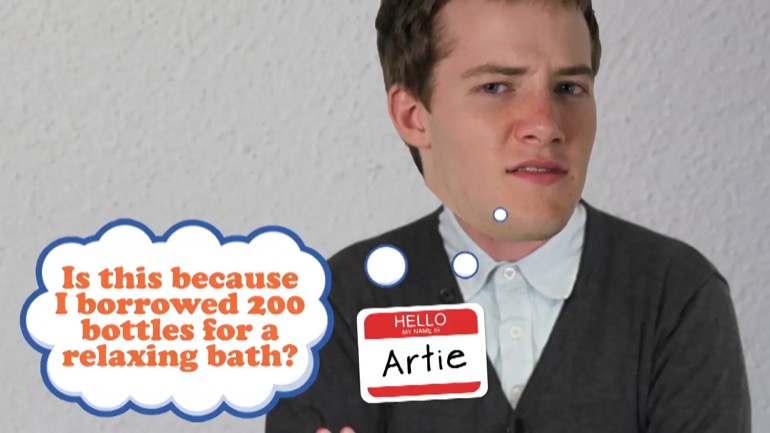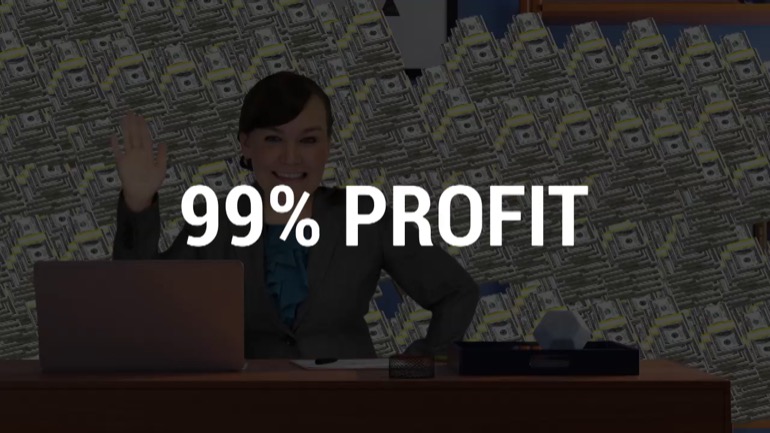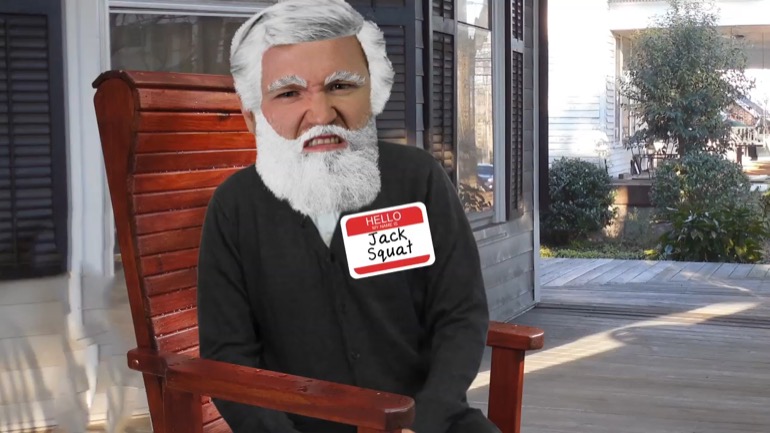ShmoopTube
Where Monty Python meets your 10th grade teacher.
Search Thousands of Shmoop Videos
Principles of Finance Videos 166 videos
How is a company... born? Can it be performed via C-section? Is there a midwife present? Do its parents get in a fight over what to name it? In thi...
Company Formation, Structure, and Inception: Unit Intro. Sorry, Leo DiCaprio fans—we're not going to be breaking down the plot of Inception. We'r...
Okay, so you want to be a company financial manager. It's basically up to you to make money for the shareholders. It would also be swell if you mad...
Principles of Finance: Unit 4, Mattel’s Real World Metrics 4 Views
Share It!
Description:
In this video, we'll take a look at Mattel's real world metrics. We're not in Barbie's Dream House anymore, Toto.
Transcript
- 00:00
Principles of finance ah la shmoop mattel's Real world metrics
- 00:05
Okay kens and barbies Or you know boys and girls
- 00:09
let's take another look at mattel under cost of sales
- 00:14
Right down here Same has cost a good sold We
- 00:16
see that the number for the june thirty two thousand
Full Transcript
- 00:18
sixteen quarter was five hundred twenty three million lots of
- 00:22
plastic And if we check out the same period snapshot
- 00:25
for june thirty two thousand sixteen balance sheet when we
- 00:27
get this zooming in we see inventory is as eight
- 00:31
hundred ninety one million Again a lot of plastic So
- 00:35
our inventory turnover rate during this period was what five
- 00:39
Twenty three Over Eight Ninety one that's Fifty eight point
- 00:42
seven percent So was that good Bad ugly What does
- 00:44
that mean anyway While making a lot of assumptions notionally
- 00:47
it means that we only sold a bit over half
- 00:50
of the inventory that we had on hand Was that
- 00:53
good It cost us a lot to store all that
- 00:55
plastic Did we have a barbie version Thirty eight point
- 00:58
Oh that just sat on the shelves What are other
- 01:00
companies Inventory turnover numbers like is there a tangible allegory
- 01:05
From something that's easy to digest that can help us
- 01:08
frame all this always well the store manager of a
- 01:11
safeway grocery store has a choice of selling capers those
- 01:15
semi pickle tasting round things that are like the size
- 01:19
of tiny piece at twenty bucks a jar which cost
- 01:22
safeway five bucks so safely makes fifteen dollars a jar
- 01:25
or the store manager can sell diet coke which sells
- 01:29
for eighteen dollars for a twenty four pack and cost
- 01:32
safeway fifteen dollars Safeway makes only three dollars a unit
- 01:36
on diet coke sold So you future graduate in english
- 01:40
who will run a safeway store someday what's it going
- 01:42
to be there pip poke or capers way Really hope
- 01:45
you said coke Why turn over Like how many times
- 01:49
do you buy capers Like maybe once a month if
- 01:52
you cook a lot of italian food at home maybe
- 01:54
maybe twice a year if you don't But how often
- 01:57
do you need diet coke And we say need not
- 01:59
want because well you know the caffeine think if you're
- 02:02
an average american you by at least a few twenty
- 02:05
four packs a week You drinking He roomie drinks Um
- 02:08
your friends drinking So while you only make three dollars
- 02:11
or one fifth of the unit profit that you make
- 02:15
from a sale of a bottle of capers when so
- 02:17
you're selling diet coke you probably have fifty times the
- 02:20
turnover of diet coke versus capers and fifty times three
- 02:23
hundred fifty bucks two times fifteen is thirty And while
- 02:26
that's easy math So in the case of mattel's quarter
- 02:29
here and note that we just used quarterly numbers here
- 02:32
maybe it was a good idea Maybe it wasn't all
- 02:34
right Well let's look at the annual Numbers from 2015
- 02:37
figure some things out So on an annual basis inventory
- 02:41
was five hundred seven million at the end of two
- 02:43
thousand fifteen And cog zor costs in this case was
- 02:46
two point nine billion Roughly so the ratio here's two
- 02:49
point nine over that five eighty seven figures a four
- 02:52
point nine three or five times ish Good bad Well
- 02:55
lot better than it was in the crappy single quarter
- 02:58
turnover analysis Why here's a int o cubed So we
- 03:01
turned over our plastic five times in the entire year
- 03:04
Was that good Bad What We still don't really know
- 03:07
Our work isn't done We have to look over our
- 03:09
shoulder at our peers All right How do we do
- 03:11
that Well we're whispering hasbro to you now Yeah Asset
- 03:15
turnover All right We're on a roll with his turnover
- 03:17
thing Inventory turnover covers just one thing Inventory on the
- 03:22
balance sheet So it ignores a ton of other assets
- 03:24
we own have invested capital in and should be tracking
- 03:28
Welcome to asset turnover which is calculated as sales divided
- 03:32
by total assets Again no thie magic of this formula
- 03:36
It equates a balance sheet item with an income state
- 03:39
item So let's take a look at both of the
- 03:41
mattel sets of books Check out sales for the june
- 03:44
quarter june thirty two thousand sixteen Nine hundred fifty seven
- 03:47
million and change Okay so that goes in the numerator
- 03:50
Then total assets is five point nine Blah blah blah
- 03:53
billion and note that's billions than dominator And it gives
- 03:56
us a fraction that looks about like this Nine Fifty
- 03:58
seven over in five nine three two Alright sixteen percent
- 04:01
change Well what does that mean Well steppin way back
- 04:04
It means that we only sold sixteen percent of all
- 04:07
Of our assets Like if you thought about it in
- 04:09
a financial laboratory If you invested a million dollars into
- 04:12
something and this quarter you sold one hundred sixty thousand
- 04:16
dollars Well you probably feel like you could have invested
- 04:19
your capital better elsewhere Remember that just because we sold
- 04:23
one hundred sixty thousand dollars worth of stuff it doesn't
- 04:25
mean that our profits were one hundred sixty thousand In
- 04:28
fact they were likely vastly less than one hundred sixty
- 04:31
grand That is we have a very poor return from
- 04:34
our invested capital in that time period Let's revisit on
- 04:37
an annual basis which for a highly seasonal company like
- 04:40
toy sales Probably a much more fair way to look
- 04:43
at things because of you know that thing what's called
- 04:45
Oh yeah Christmas Alright we'll hear the annuals for mattel
- 04:48
Total sales divided by total assets gets us in a
- 04:51
five Seven oh two over Some one seven three two
- 04:53
Yeah about three point three All right again The blank
- 04:55
stare What does this mean Well it means we turned
- 04:58
over the dollar volume of our total assets three times
- 05:02
during the year All right let's make a few numbers
- 05:04
Why not let's Say our net after everything margin our
- 05:08
profit margin on our sales was fifteen percent on a
- 05:11
normal annualized basis Alright over an average say ten year
- 05:15
period All right so really getting a normalized number here
- 05:17
we said we're making all this up If that's the
- 05:19
number than fifteen percent of five point seven billion is
- 05:22
about eight hundred fifty million bucks and profit there took
- 05:25
a foundation or base of one point seven billion in
- 05:29
total assets toe let us achieve that kind of profitability
- 05:32
of eight hundred fifty million kind of sort of well
- 05:34
that's one way to frame it anyway and that's pretty
- 05:36
good probably relatively and were using the very high historic
- 05:40
profit margins of fifteen percent to get there Well the
- 05:42
job of our assets is to produce profits for the
- 05:46
company and since profits are usually so cyclical seasonal and
- 05:50
generational companies tend to use revenues as the dill emitter
- 05:53
in the equation because it normalizes volatility meaning profits change
- 05:57
a lot from year to year quarter quarter but revenues
- 05:59
generally a relatively stable otherwise you'd have a lot of
- 06:02
gobbledygook with two bad years of lost followed by a
- 06:05
record winter year than a crappy one and three mediocre
- 06:08
ones that it would be hard to do any planning
- 06:10
based on that set of volatile data Remember also that
- 06:13
assets are a book value depreciated balance sheet item Recall
- 06:18
that while long diatribes on how bad accounting rules are
- 06:22
at times that's how some assets which have been depreciated
- 06:25
away to nothing like a broadcast license may still be
- 06:28
worth a ton of money but we might be holding
- 06:31
them as being almost worthless on our balance sheet So
- 06:33
if you have an old tractor smelting factory that works
- 06:37
just fine today thank you very much then as an
- 06:39
asset it's probably k carried at a very low number
- 06:43
It makes you appear a lot more efficient as a
- 06:46
company than you really are Think about it for this
- 06:49
course Just get the basic concept that you've turned over
- 06:52
all your assets three times a year for a computer
- 06:55
software company that would probably be awful since well they
- 06:58
don't have much in assets or inventory for an automobile
- 07:01
company at private Great since they have such massive fixed
- 07:04
costs and capital expenditures just to get to the point
- 07:07
Where they can stamp out even one car let alone 00:07:10.332 --> [endTime] you know a few hundred thousand
Related Videos
GED Social Studies 1.1 Civics and Government
What is bankruptcy? Deadbeats who can't pay their bills declare bankruptcy. Either they borrowed too much money, or the business fell apart. They t...
What's a dividend? At will, the board of directors can pay a dividend on common stock. Usually, that payout is some percentage less than 100 of ear...
How are risk and reward related? Take more risk, expect more reward. A lottery ticket might be worth a billion dollars, but if the odds are one in...







































































































